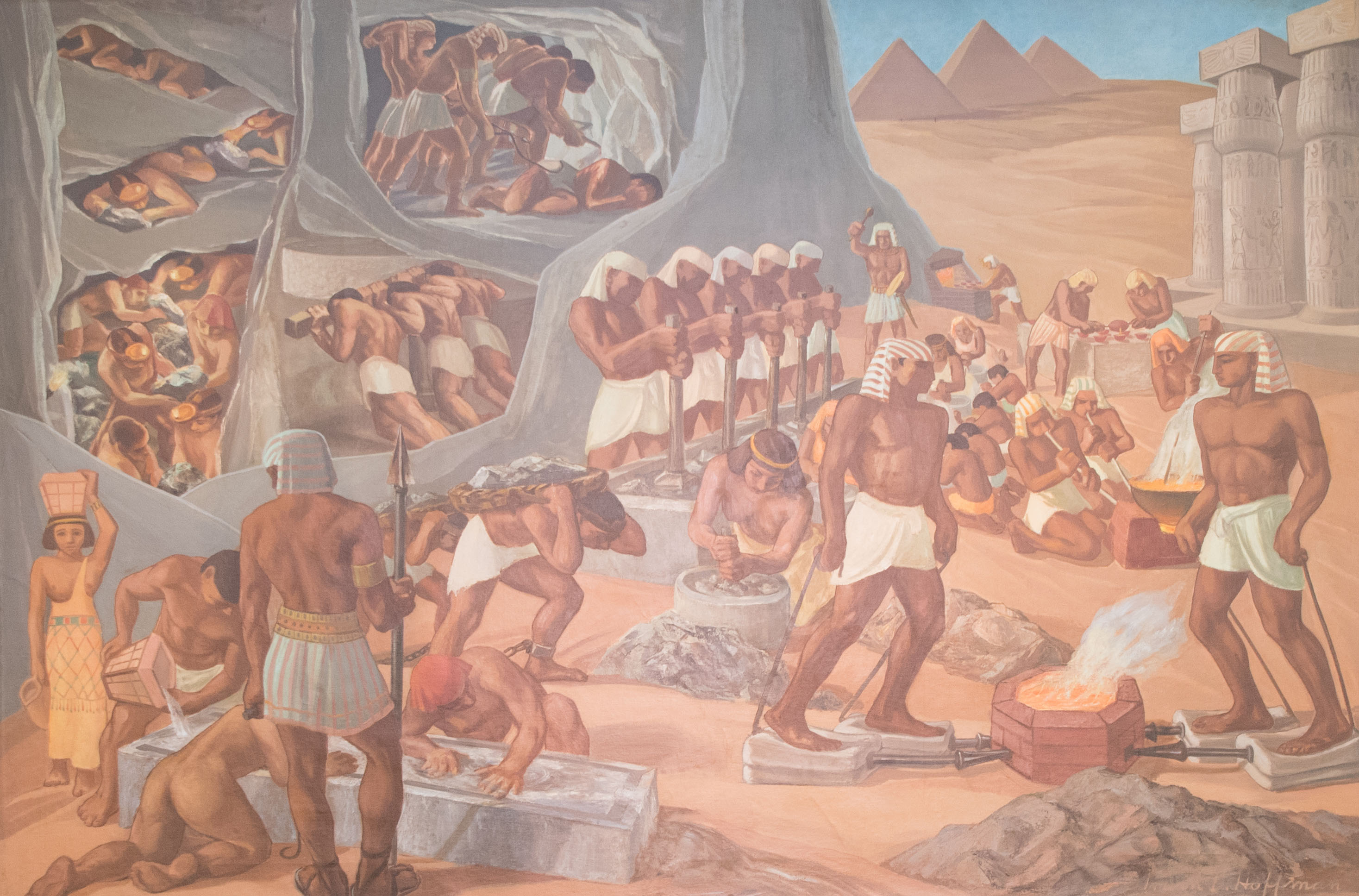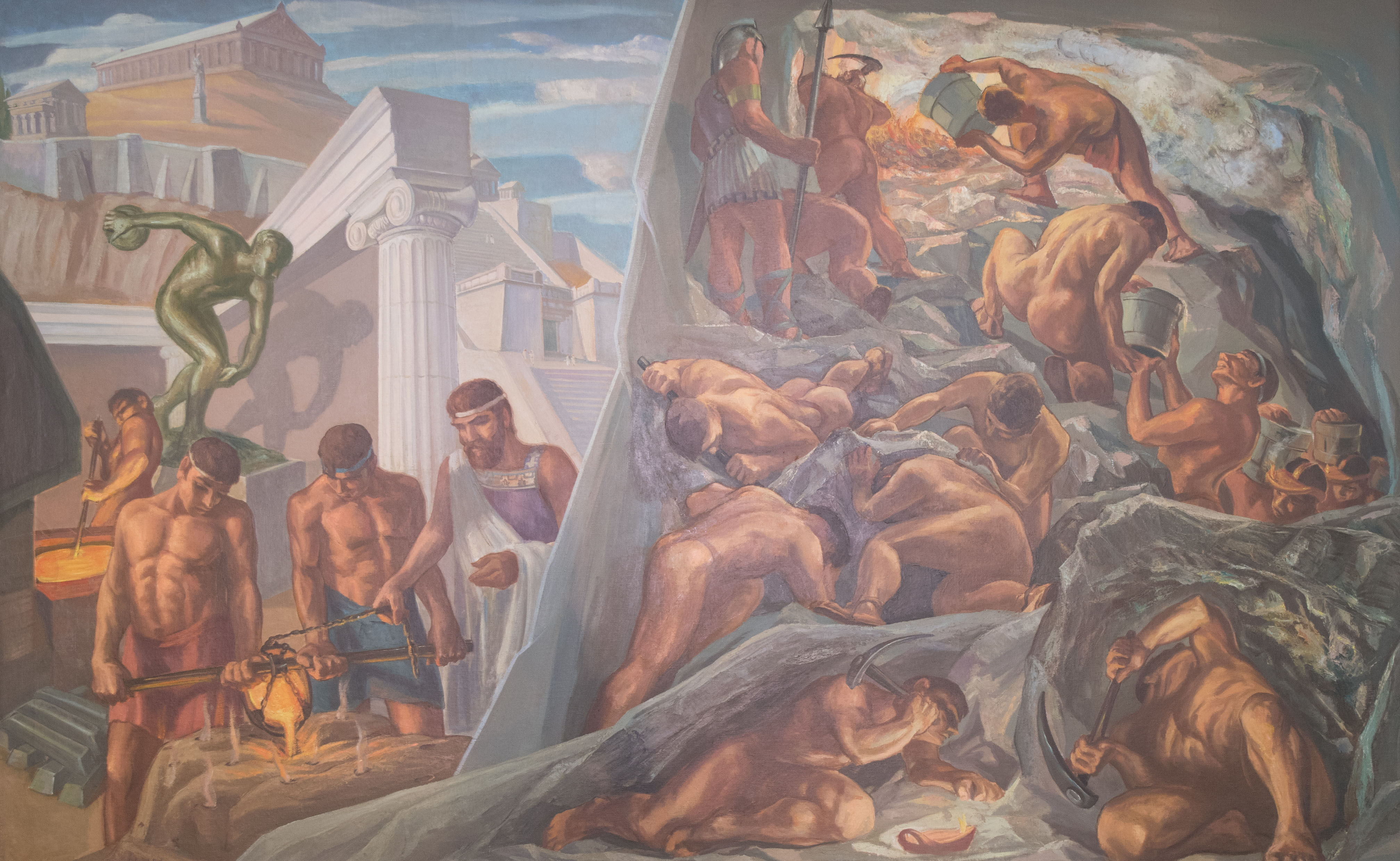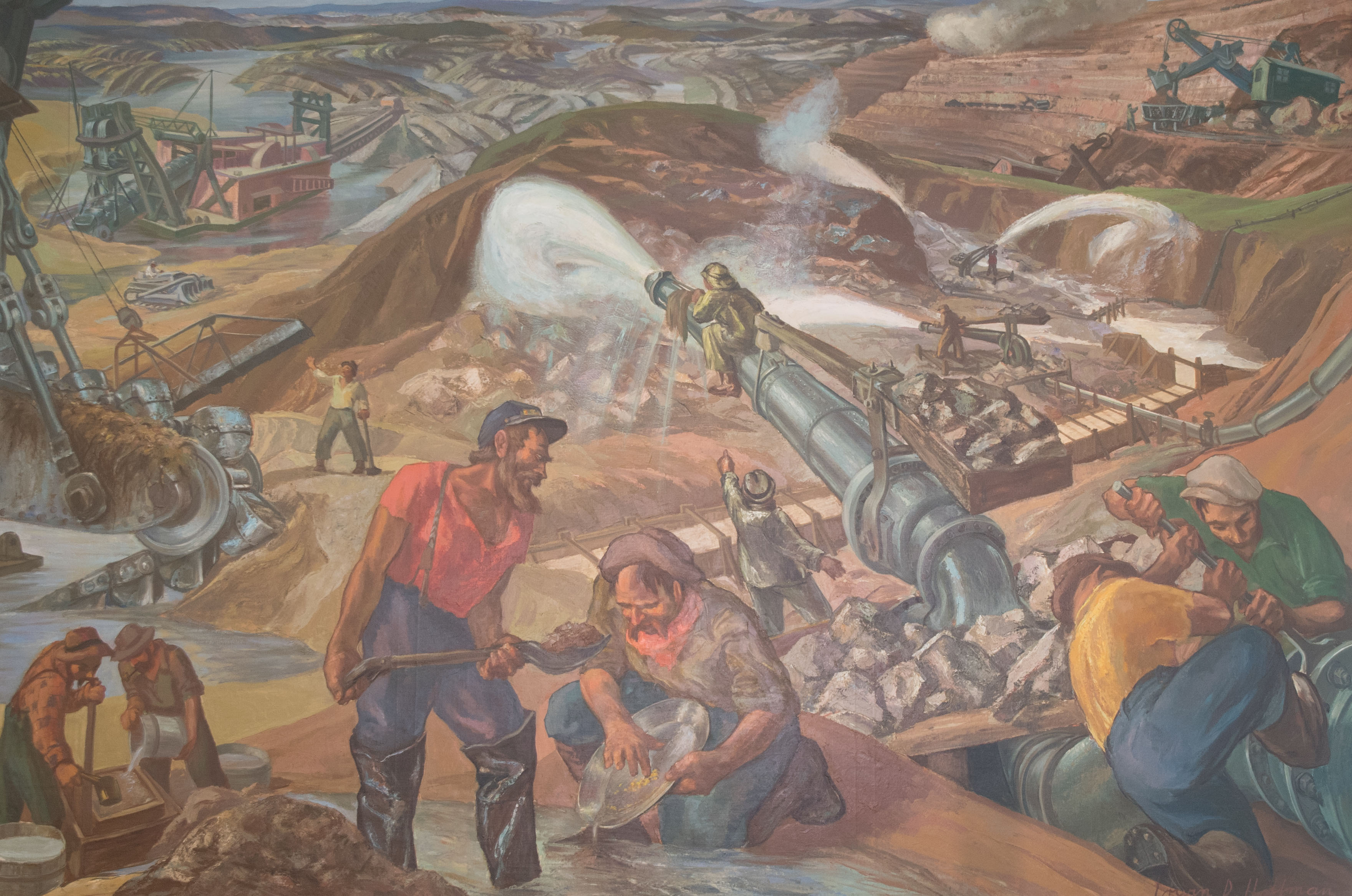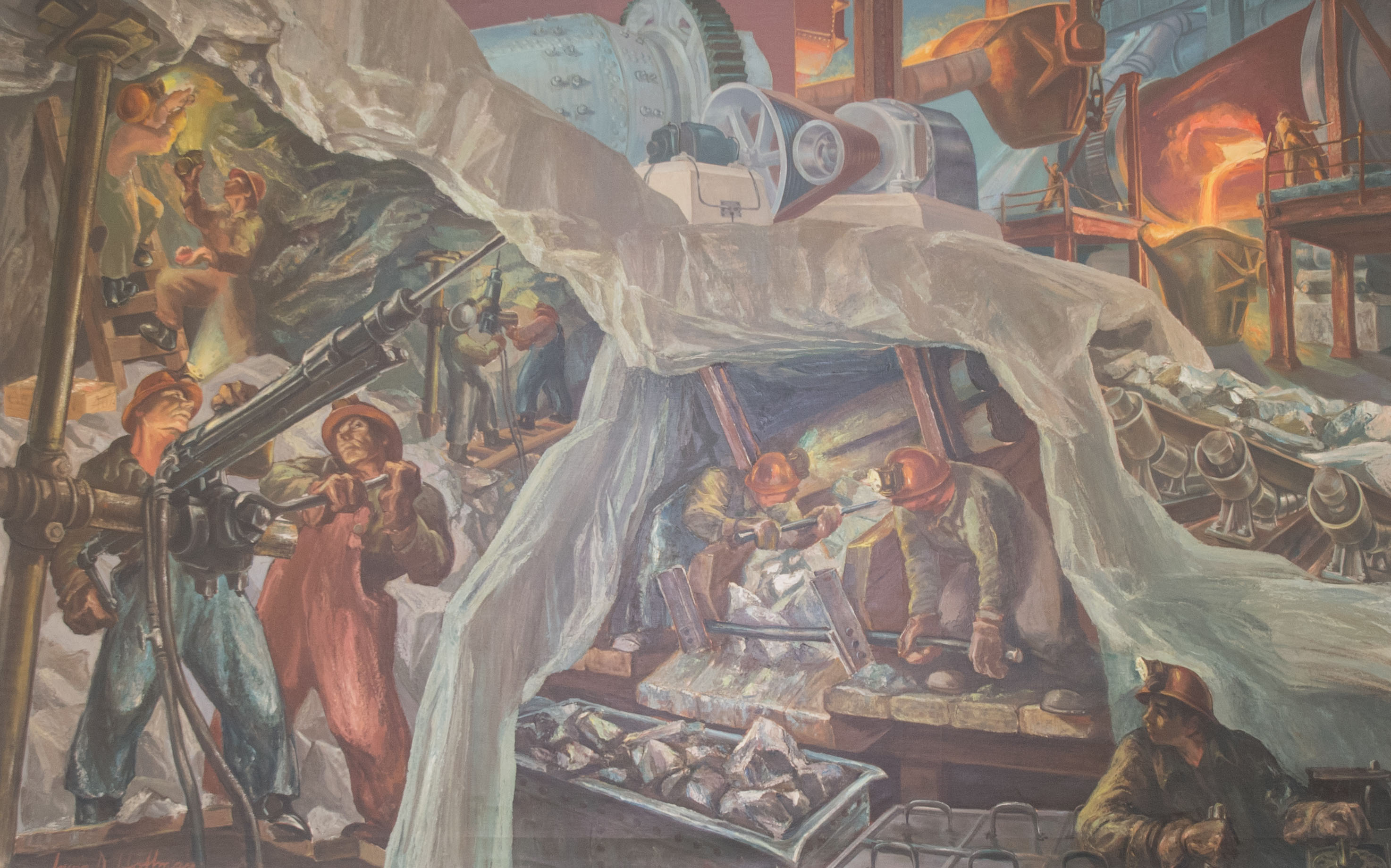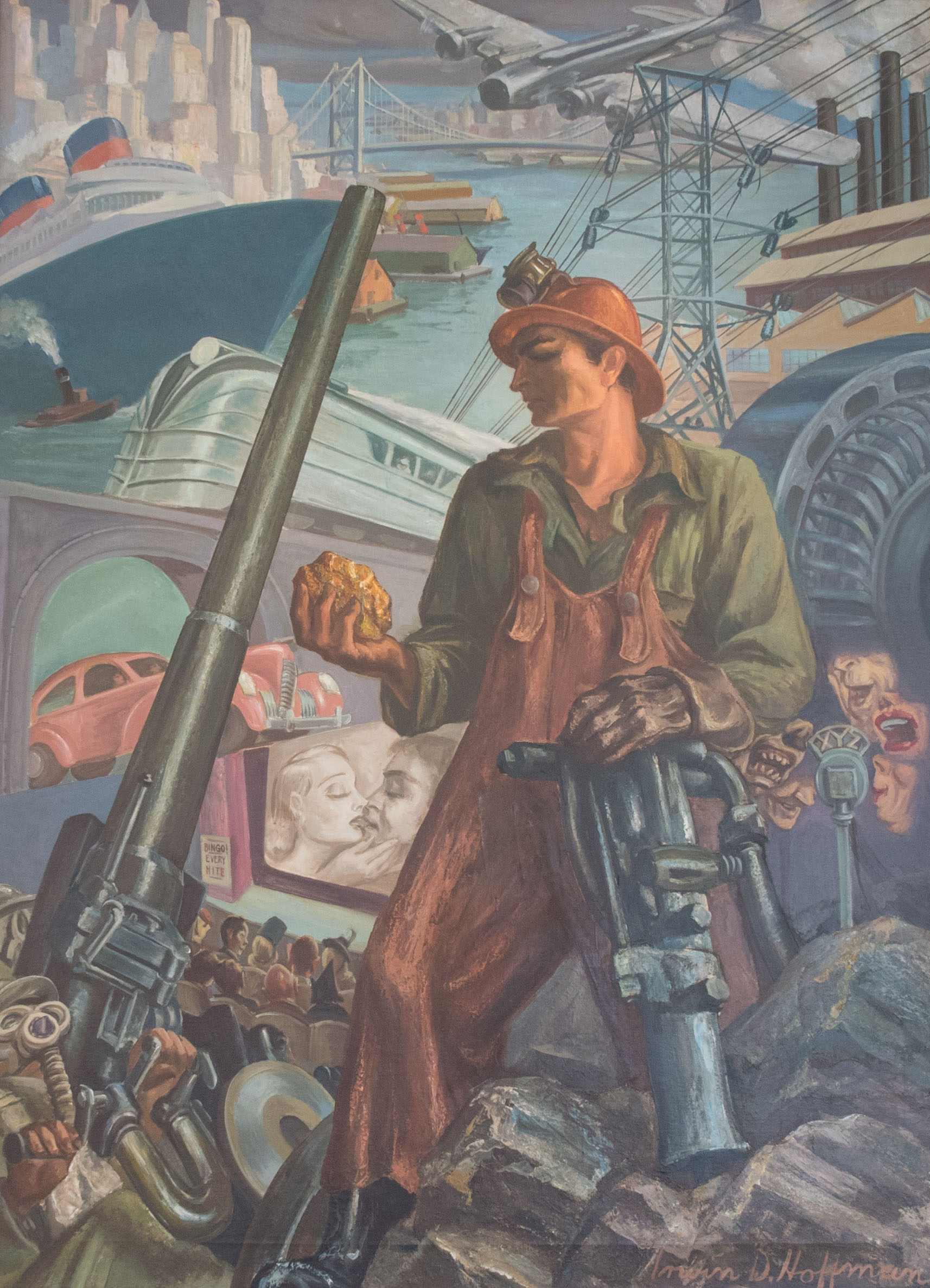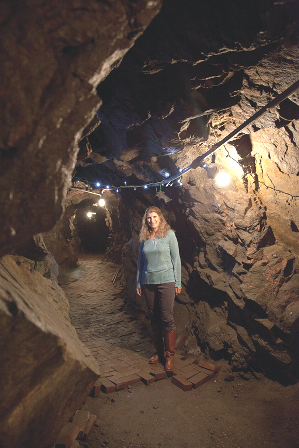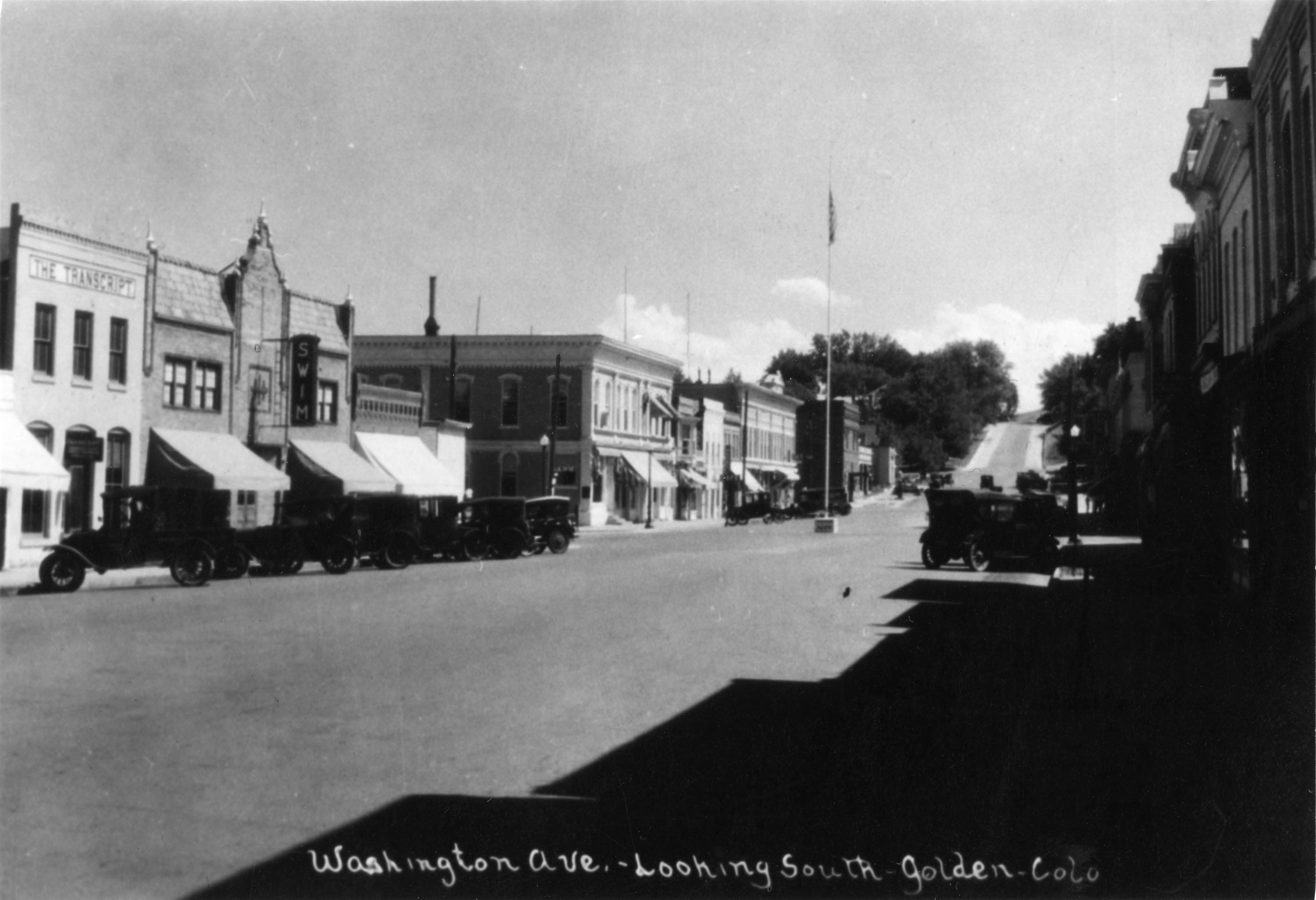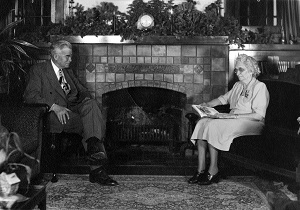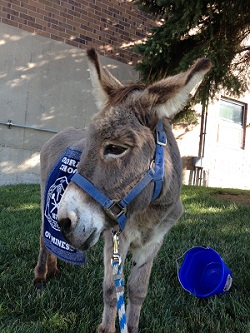An Artist’s Take on Mining History
The Mines Geology Museum is known for its extensive collection of minerals and mining artifacts, serving as the state repository for Colorado’s geologic heritage. However, upon entering the museum, attention is drawn away from the brightly lit cases of sparkling gemstones and minerals to a man-made display with just as much significance and value.
Hanging on the west perimeter of the museum’s main floor, a series of murals reflects the story of how many of the museum’s artifacts were found. The massive oil-on-stretched-canvas paintings depict the history of mining—from the discovery that metal can be mined from meteors to the applications of ore in contemporary society.
Appropriately titled The History of Mining, the series, painted by Irwin D. Hoffman (1901–1989), was commissioned for the 1939 Golden Gate International Exposition in San Francisco. Ranging in size from 7 by 5 feet to 7 by 11 feet, with some of the larger pieces weighing nearly 150 pounds, the murals have become a focal point of the museum that is hard to miss.
an artist’s life
Hoffman developed a passion for art from an early age. He was first given a sketch pad and sticks of charcoal when he was six years old. By the time he reached high school, Hoffman’s talents were apparent, and he attended the School of the Museum of Fine Arts in Boston. Hoffman’s training earned him the prestigious Paige Traveling Scholarship in 1924, allowing him to study art in Paris for two years. Over the next several years, Hoffman traveled Europe and northern Africa, immersing himself in the art and culture of the region.
When he returned to the U.S. in the 1930s, Hoffman settled in New York, concentrating on portraits and etchings. Yet, what made his work unique was that he tended to live and work with the people who appeared in his works, bringing a familiarity into his art that a casual observer may not have been able to capture.
Hoffman’s brothers, Arnold and Robert, were both successful mining engineers, and Hoffman often accompanied them on their claim-staking expeditions. While on the road, Hoffman documented the people he encountered—miners and the people who resided in mining towns. According to an account in the book
An Artist’s Life, “the rapport he developed with his subjects allowed him to depict startlingly intimate details in the lives of these remote people.”
Hoffman’s works were widely exhibited and received numerous awards, so it was no surprise when Hoffman was commissioned to paint a series of murals for the Golden Gate International Exposition in San Francisco in 1939. When writing about the event in her article, “Artist Irwin David Hoffman (1901–1989),” Susan Robinson said, “At the time, the paintings were labeled a ‘tour de force’ by both the scientific and art communities, a profound compliment to the thirty-eight-year-old artist that solidified both his name and career.”
finding a home
After the exposition, Hoffman’s murals were bought by Barney and Gertrude Whatley, Denver residents with connections to the mining industry, who donated the series to Mines in 1940. A year later, Hoffman visited campus to view his paintings, then on display in Berthoud Hall.
In 1988, the murals were loaned to the National Mining Hall of Fame until they were transferred to the Mines Geology Museum in 2003. However, when the museum suffered ceiling damage from heavy rains in 2013, the murals underwent a yearlong restoration to bring them back to their original state. The restoration brought out the paintings’ colors and new LED lights were installed above each piece to better highlight Hoffman’s work.
recovering a forgotten piece
One day in June 2016, Mines Plumbing and Utilities Supervisor Craig Crow was in the Engineering Hall Annex, searching for shut-off valves in preparation for a new makerspace in the building. While there, Crow came across what looked like a rolled-up poster pushed to the back of a shelf and forgotten. When he unrolled it, he discovered it was actually a painting.
Crow snapped a picture of the signature in the corner and took the painting back to the plumbing shop on campus. After a bit of research, Crow realized the painting likely had some value and took it to Mines project planner Mike Ray, who had been involved in hanging the other six murals in the Mines Geology Museum. “I immediately recognized it as belonging to the group hanging in the museum,” Ray said.
After a considerable amount of time spent rolled up and slightly crumpled and creased, the paint on the canvas was starting to crack and flake off, leaving the painting in a state of disrepair. Over the next two years, the painting underwent an extensive restoration, which involved cleaning, patching holes, touching up the dry and flaking paint, restretching the canvas and documentation. A frame was also created to match the other murals in the collection. The painting was finally hung in the museum on March 2, 2018.
This final painting depicts the parallels between early and contemporary miners, a summative piece to the other murals in Hoffman’s series and a lasting tribute to the extensive history of mining.
Visit the Mines Geology Museum to view the Hoffman mining murals and learn more about Colorado’s mining and mineral history. Go to mines.edu/geology-museum for visiting hours.
Some of Hoffman’s smaller paintings and sculptures can be viewed in the Arthur Lakes Library.


